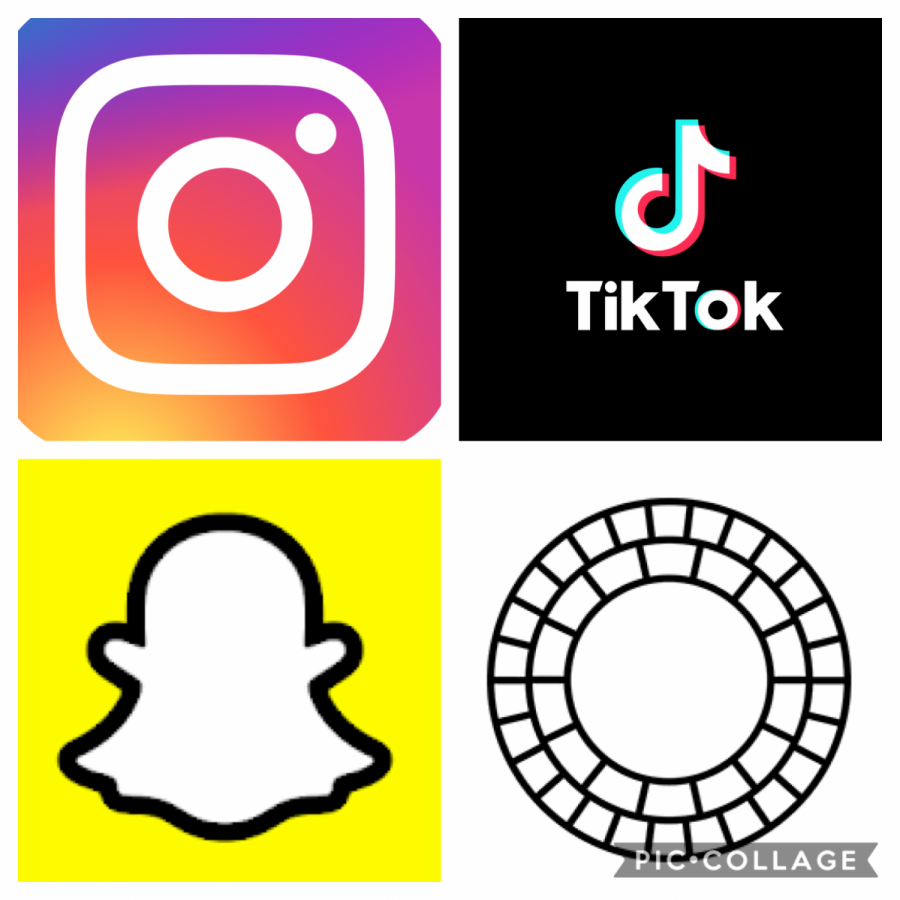What My Rules for Social Media Would Be if I Were a Gen Z Parent
Oct 6, 2020
Trigger Warning: The following article contains sensitive content that may be unsuitable for some readers. Read at your own risk.
As a teenager, I have a decent amount of knowledge of what exactly is going on inside the world of social media. Countless hours of Instagram, Snapchat, and, my personal favorite, TikTok, have pretty much made me an expert on what to expect on social media.
Or, so I thought. Writing this article made me realize that it’s pretty much impossible to be an “expert” on social media. I never see it coming when something out of my comfort zone pops up on my feed — it is just so unpredictable that expertise feels impossible.
TikTok is an excellent example of “unpredictable social media” because unlike Snapchat, Instagram, or even VSCO, you don’t really choose your feed. Many users app use the For You Page as their main source of content. The For You Page has an algorithm that is designed to appeal to you based on what you’ve previously shown interest in, so your feed is actually tailor-made for you.
For this reason, I would never have predicted seeing a video of a man shooting himself in the head as his dog watches in the background.
Or a sex tape of a random couple.
Or a group of teenagers smoking what they claimed to be meth (I’ve never smoked meth, so I cannot fact check that) in an abandoned hospital.
This brings me to my first rule for my nonexistent child: no TikTok account until high school.
Unlike your mother, you will not be permitted to wake up and scroll through your feed for hours, and then do the same thing before bed. I would have said 15-16 would be a more appropriate age, but I want my nonexistent child to be able to connect to their TikTok-using peers and not feel excluded. Although TikTok takes down content that isn’t “suitable for mature audiences,” this plan isn’t foolproof. Thousands of people have to see a video and report it before TikTok notices it’s inappropriate. Other times, one video is deleted just for another copy of it to appear on your FYP a couple of hours later. In other words, younger users are never really safe from “unsafe” content. By freshman year, I’d expect most children to be mature enough to handle it, but in case they’re not, a limited screen time may help lower the risk of exposure to these types of videos.
Which brings me to my second rule: one hour of TikTok per day, maximum.
Though helpful with limited exposure to these videos, it’s also necessary because of how addictive the app tends to be. I’d report my screen time to you, but I’m afraid my own mother may read this article and decide to come up with some social media rules herself. (Hi, Mom!)
I noticed the other day sitting at a stoplight, that I had a physical urge to scroll through TikTok, not just a mental one. I thought about the app, and my hand actually reached towards my phone, like a magnet. I’ve stopped to scroll through my For You page twice just while writing this article, and I can’t tell you the last time I fell asleep to something other than a video of some teens dancing on my For You Page. I know how addictive the app is, and I know that it decreases my productivity, so by setting a screen time limit for the app, I would reduce the chance of my future offspring forming an addiction like this.
With the most problematic platform regulated, we can move on to Snapchat and Instagram.
Coming up with these rules was more tricky. I had to really dig deep into my personal experiences when deciding the age limit and other rules for these apps. I’ve had Instagram since probably fourth grade when I created an account with my mom’s knowledge. Since then it’s been an endless cycle of posing for pictures and coming up with the perfect caption.
I have a vivid memory of sitting on a bench outside Fairview South Elementary School on Field Day in seventh grade, and demanding my friend Max to log into his second Instagram account, his Finsta, to like my photo and bring it from 99 likes up to 100. I used to send every person in my Snapchat account a blank screen that read “lmp” or “like my picture” after every Instagram post I made. I cared a lot about likes and followers, and I know I wasn’t the only one, because my friends were the ones who drilled the importance of likes into my head.
I can also remember sitting on a friend’s bed in probably seventh or eighth grade, and asking her how she had so many followers, and how I could get that many. Her response was that she simply just followed randomly people and expected a follow back.
So, I did the same thing. Up until I cleared my followers list during quarantine, there were probably hundreds of followers who I’d never actually met before, or even heard of.
Which brings me to Rule 3: know your followers.
My child must have a direct relationship with the person who’s seeing their posts and all of their business.
Now, the big difference between Instagram and TikTok, or any other social media app and TikTok to be honest, is that Instagram does a pretty good job making sure their content is suitable for younger users. I don’t really see anything too disturbing on the app, and certainly nothing like the videos I see on Tik Tok. In fact, if something is really disturbing Instagram provides a trigger warning.
My main problem with Instagram is actually the unrealistic standards that celebrities, models, and other influencers tend to set with their posts. As a young girl, I followed a lot of celebrities. I still do today, but as a middle schooler who hadn’t yet grown out of her low ponytail, Keen shoes, and buck teeth, I was always self-conscious and confused about why I didn’t have Kim K.’s curves, or why my hair didn’t look so perfect when I put it in an Ariana Grande high ponytail.
In 2014, Taylor Caniff, a social media star that year, posted a video explaining what he looked for in a girl. The video recently reemerged when a girl (on TikTok) talked about how she was still experiencing insecurity as a result of the standards set by Caniff. I have a lot of male friends who have described the insecurities these apps caused for them at a young age as well. I remember a boy at Homecoming asking me to take off my heels so that I wouldn’t appear taller than him in pictures.
Unrealistic expectations for appearances are not new but rather disseminated more widely as a result of social media. Because the brain can be influenced at such a young age, the same age limit rule I’ve set for TikTok applies to Instagram as well.
The only reason I’d allow my children to have a Snapchat account at age 13 is because I know how hard it is it communicate in middle schools when not everyone has a phone to text on. I know my child won’t be getting a phone until probably eighth grade or high school, so Snapchat is an app they can use to communicate with friends from a different device.
Snapchat is a bit less harmful than Instagram, but that stupid snap score feature makes it seem as if it actually matters how many people you Snapchat, or how often you Snapchat them. I remember losing my phone freshman year and sending streaks from my Chromebook in order to make sure that my snap score was increasing. When I went to sleep away camp for four weeks, I put my friends in charge of logging into my account and keeping streaks.
The content on the app is much more protected than it is on TikTok, but there’s always the risk that you have some rando adding you and asking for feet pictures. The same followers rule for Instagram applies to Snapchat.
How can we protect our middle school children from attacks online?
No app is safe, not even VSCO, which I was set to write about as the only app I trust until I scrolled through my feed and saw:
- A picture of a Louis Vuitton bong
- A “DSCO” (basically a boomerang) of a girl hitting her Juul.
Not only does this normalize the use of drugs and nicotine, but it actually glamorizes it and makes followers think it’s “artsy” and high fashion.
It’s unfortunate, but concerns like these remind me that there’s no way to completely protect your child from harmful content on social media. The only thing you can do is attempt to limit their exposure and hope they’re mature enough to handle it.





Ms. Fey • May 23, 2021 at 3:00 AM
Thank you for this super helpful article of hints to help young people (and their caregivers!) navigate the treacherous yet potentially fun waters of social media. I really appreciate the solid information the writer provided, as well as the light touch they used to discuss a serious topic. Kudos!!